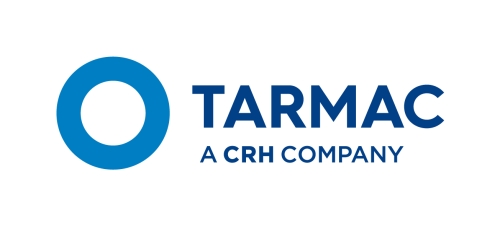climate change
Design out CO2
30% reduction in CO2 per tonne of product compared to 1990.
"Using waste from other industries as fuel for our cement kilns is an excellent way both of contributing to the circular economy and of reducing CO2 emissions. "
Mike Eberlin, managing director, Cement and Lime
Addressing climate change is a cornerstone of our approach to sustainability.
highlights
In 2019, as part of our commitment to design out CO2 and responsibly procure our goods and services, Tarmac has signed a landmark deal, known as a “power purchase agreement” or PPA to procure 100% renewable electricity right across the whole of our business.
At our cement plant in Dunbar, Scotland we use electricity produced from methane gas captured from a neighbouring Viridor landfill site to power our process.
Using lower CO2 fuels
Our cement business has continued to focus on replacing fossil fuels with waste-derived fuels, especially those that have a biomass content. Not only does this help to reduce CO2 emissions arising from our cement manufacturing processes, it also conserves valuable natural resources and helps to reduce the amount of waste that goes to landfill. An important aspect is that the non-combustible components in the waste-derived fuels end up forming a beneficial part of our product, so there is no waste. In 2019, over 35% of the heat input to our cement kilns came from waste-derived fuels, including 14% from the biomass content. The types of fuels used across our cement operations now include waste tyres (whole or chipped), solid recovered fuel (SRF) from non-hazardous materials including paper, cardboard, plastics, textiles and waste wood chips, recycled liquid fuel, processed sewage pellets (PSP) and polymer chip. Fuels such as waste wood chips and PSP are 100% biomass while tyres, SRF and polymer chip contain a proportion of biomass. The use of fuels containing biomass makes a significant contribution to reducing CO2 emissions as biomass is considered carbon neutral.
Our Cement and Lime business is aiming to further boost the sustainability of its operations at Dunbar cement plant by agreeing a contract with leading Scottish resource management company, Hamilton Waste and Recycling, to begin using SRF at the plant. This will enable us to increase the proportion of sustainable fuels we use; harnessing valuable energy, reducing our carbon footprint and significantly decreasing our reliance on fossil fuels.
We plan to continue to increase our use of waste-derived fuels elsewhere in the business in 2020 and are working closely with policymakers and suppliers to identify further opportunities. A key aspect is a policy regime that encourages their availability for use by our sector.
In our materials business, we have continued to convert our asphalt plants to lower CO2 fuels, by switching from gas oil to lower CO2 alternatives like natural gas or Liquid Petroleum Gas (LPG) where possible.
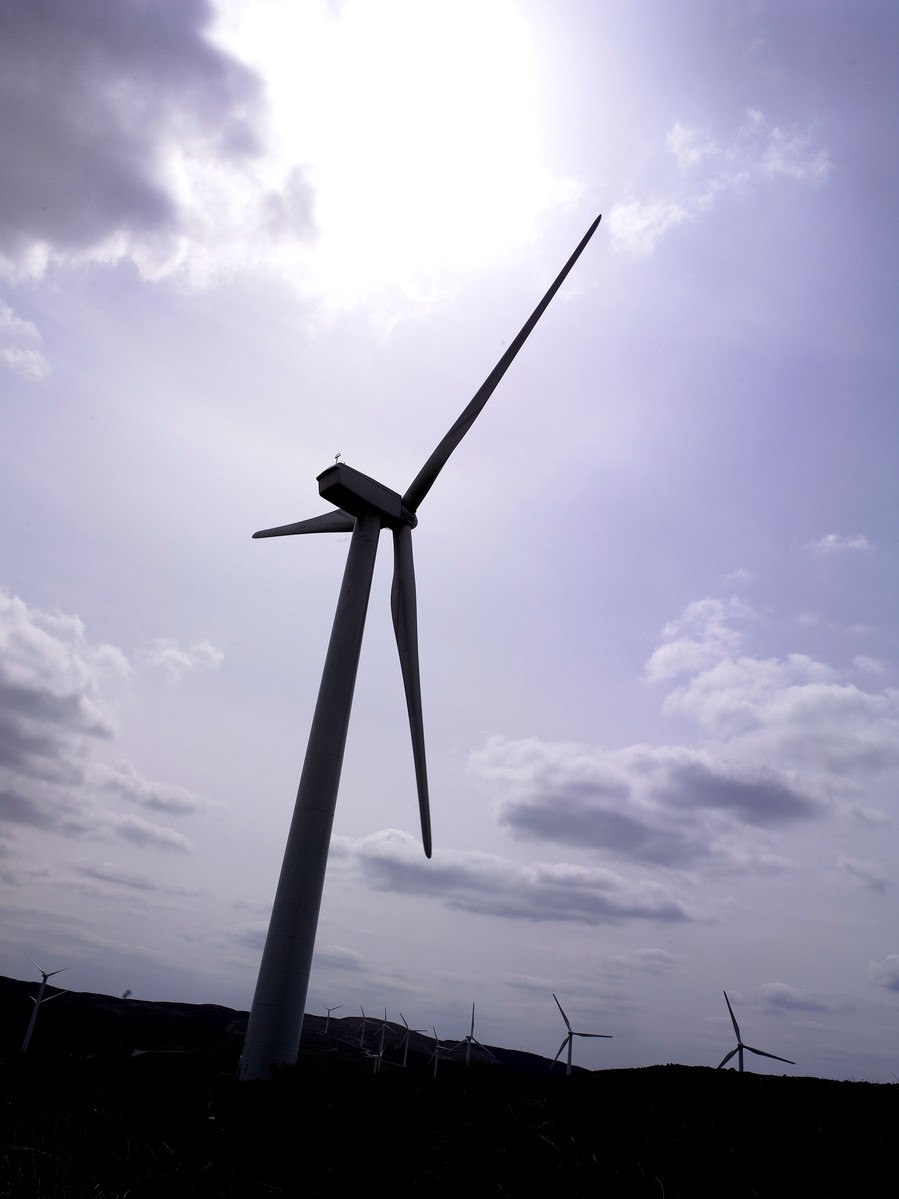
Reducing transport impact and emissions
We have continued to optimise our use of transport and use all options available to us to transport product to our customers in the most efficient and sustainable manner. The nature of the construction sector means that moving raw materials and products by road often remains the best and most energy efficient option, that’s why it’s important to ensure we use our vehicle fleet effectively; sourcing products from the nearest supply location and maximising vehicle payloads to minimise the number of trips required. We have a rolling programme of upgrading the vehicles used by our contract hauliers and require them to move to new vehicles with the latest generation of Euro VI engines.
We also understand the need to minimise exhaust emissions to help tackle air quality issues in some urban locations and to meet the current and future requirements for deliveries in low emission zones in cities.
Our rail strategy has a big part to play in reducing emissions from transport. We are investing in new rail handling facilities and rail sidings to transport more materials by rail instead of road. This brings significant CO2 savings. We have the largest rail operations in our industry and now transport over 9 million tonnes by rail .
Electric cars and vans
In a major step this year, we have committed to transitioning our 2,000-strong fleet of company cars and vans to fully electric vehicles by 2030. As part of our commitment, we’ve become the first company in our sector to sign up to EV100 – a global initiative bringing together businesses committed to accelerating the transition to electric vehicles (EV).
We continue to support our customers and end users to create more energy efficient, lower carbon buildings and infrastructure by considering the whole-life (capital and operational) carbon associated with our products by redesigning and rethinking the way we make them. We offer a wide range of products that can help our customers and clients to save carbon now. Among options we consider are:
- Improving durability, meaning that products need to be replaced or maintained less frequently.
- Using recycled or secondary materials in products, such as ground granulated blast furnace slag and fly ash instead of clinker to reduce the CO2 in cement and concrete or use old road surfacing (Recycled Asphalt Planings) to replace primary materials in asphalt
- Creating new products that have a lower carbon footprint – Ultilow, which is manufactured at lower temperatures, saving both energy and CO2
- Providing customers with product carbon footprint information generated from our calculator tool that measures carbon across a project enabling better choices about design and what materials to use (link to website page)
- Raising awareness, through our Solutions Guides, of how our materials can be used to reduce operational CO2 emissions from buildings and. Read our low carbon solution guide here. (link to solution guide)
Tarmac is a key signatory of the UK Government’s Infrastructure Carbon Review (ICR) which aims to cut 24 million tonnes CO2 from UK infrastructure projects by 2050. In support of the ICR we have played an active role in the development of a new publicly available standard PAS 2080, the world’s first specification for Carbon Management in Infrastructure.
Collaborative working and embracing innovative technologies are key in our efforts to create a lower carbon. The Tarmac team is excited to be taking part in a ground-breaking project to explore the potential of plasma energy and hydrogen technology in the production of cement and lime. Our Tunstead cement plant will be host to some of the cement trials and will also explore if hydrogen is a viable alternative to natural gas for lime manufacturing. Funding for the project will come from the Department for Business, Energy and Industrial Strategy (BEIS) which has awarded £6.2m to the Mineral Products Association (MPA) for the fuel switching trials. The project will start in 2020 and the results will be shared with the wider industry and supply chains to ensure the we can all see the environmental benefits of the technologies.
Tarmac are also working in partnership with researchers and others in our industry to develop solutions for capturing CO2 emissions in the future. Approximately 70% of CO2 from cement production is generated from the chemical reactions (process emissions), the other 30% coming from the fuels (combustion emissions). The process emissions are difficult to reduce. We are therefore looking into ways to capture carbon and use it to make downstream products or transport it for storage in bespoke facilities, such as old gas fields.
We are working with other businesses, academics, consultants, and governments as part of a number of Industrial Decarbonisation Clusters to develop the specific steps and infrastructure needed in each region to support decarbonisation of the community and industry. By working together, we can take advantage of synergies to reduce costs and speed up deployment.
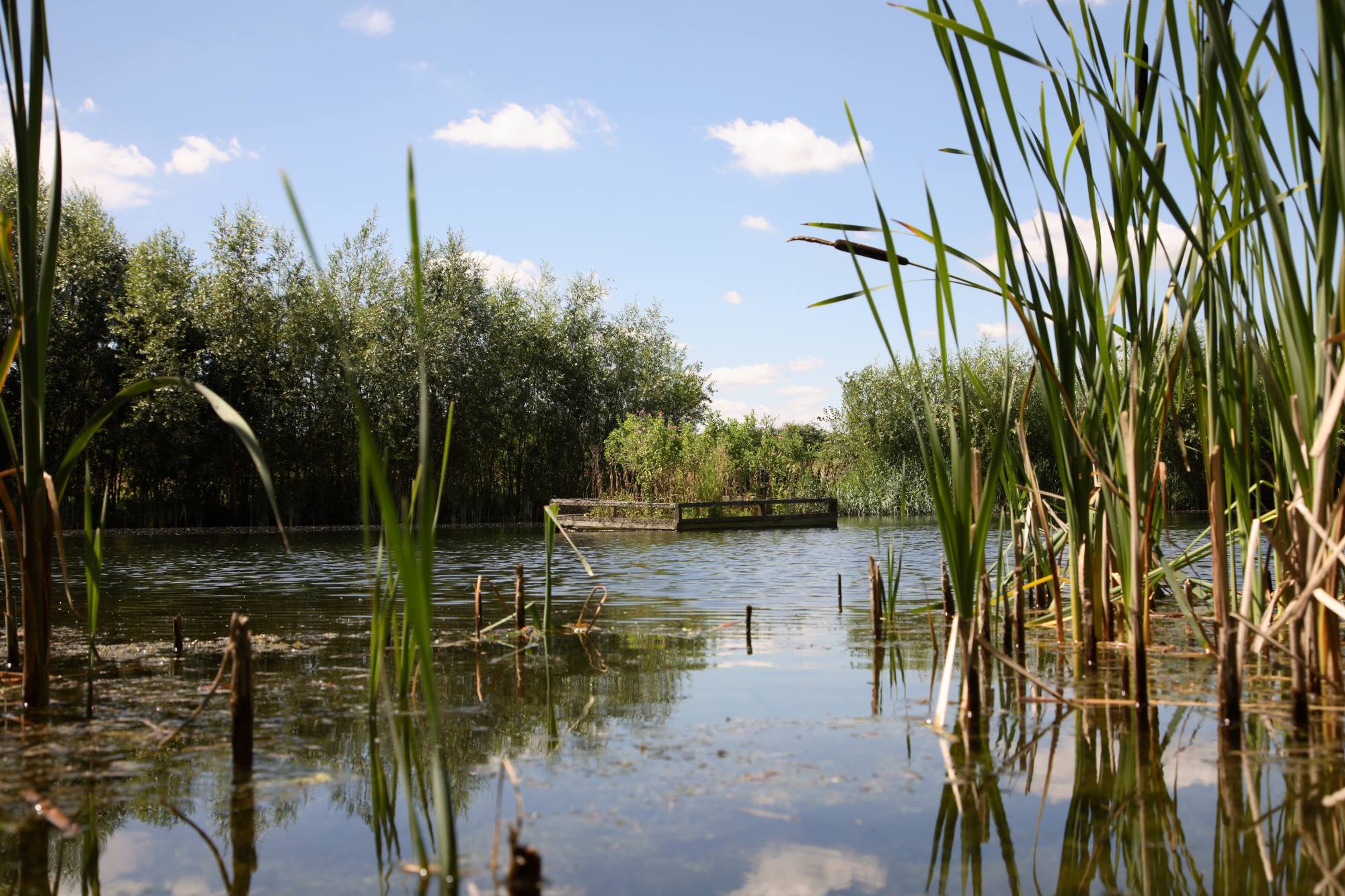
At the end of 2019 we had achieved a 23.5% reduction in CO2 per tonne of product compared to 1990. Our next milestone is to achieve a 30% reduction in CO2 per tonne compared to 1990.
We categorise our greenhouse gas emissions into direct and indirect sources in line with the Greenhouse Gas Protocol.
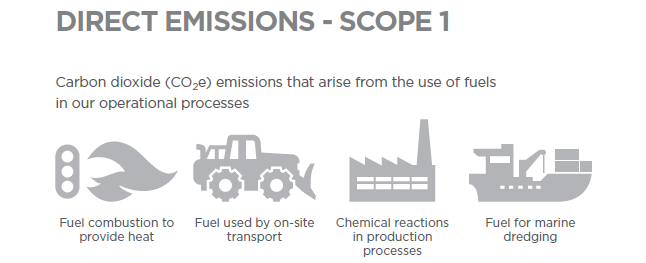
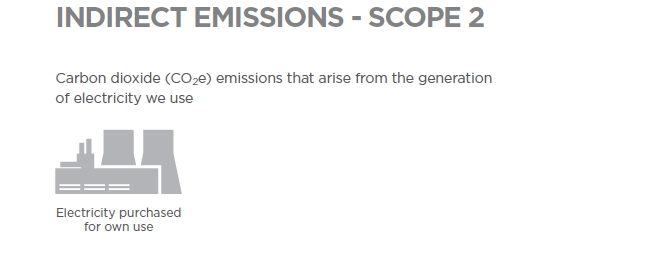
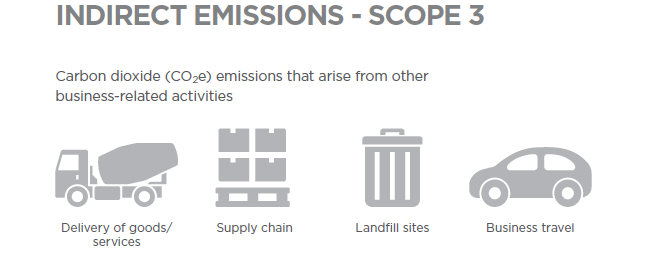
Carbon dioxide is one of six greenhouse gases that are emitted when humans undertake certain activities. Other greenhouse gases include methane, nitrous oxide and ozone – all of which occur naturally in our atmosphere. To take into account the emission of other greenhouse gases when calculating the level of greenhouse gas emissions, scientists have devised an equivalent measure – CO2e (which literally means carbon dioxide equivalent). CO2e allows other greenhouse gas emissions to be expressed in terms of CO2 based on their relative global warming potential (GWP).
So when you see a carbon footprint expressed in terms of CO2e, you can know for sure that all greenhouse gases have been included for each activity under scope, and therefore a fuller picture of an organisation's impact has been captured.
| 1000’s tCO2e | % | |
|---|---|---|
| Scope 1 | 2,343 | 77.01% |
| Scope 2 | 128 | 4.21% |
| Scope 3 | 572 | 18.78% |
| 3,043 | 100% |
Note: Scope 3 emissions have increased this year due to the inclusion of estimated supply chain emissions from external constituent materials used in our products.
| tCO2e | % | |
|---|---|---|
| Process emissions | 1,382,835 | 55.96% |
| Coal | 354,033 | 14.33% |
| Electricity | 128,057 | 5.18% |
| Waste derived fuel (WDF) | 122,359 | 4.95% |
| Natural gas | 201,617 | 8.16% |
| Gas oil | 132,712 | 5.37% |
| Petcoke | 39,746 | 1.61% |
| Processed fuel oil (PFO) | 33,225 | 1.34% |
| Kerosene | 16,025 | 0.65% |
| Marine Diesel | 19,790 | 0.80% |
| Liquid Petroleum Gas (LPG) | 40,727 | 1.65% |
| Energy use by source (GJ) | % | |
|---|---|---|
| Coal | 3,791,555 | 25.35% |
| Electricity | 1,803,614 | 12.06% |
| Waste derived fuel (WDF) | 1,365,917 | 9.13% |
| Natural gas | 4,104,276 | 27.45% |
| Gas oil | 1,852,520 | 12.39% |
| Petcoke | 437,921 | 2.93% |
| Processed fuel oil (PFO) | 446,451 | 2.99% |
| Kerosene | 232,480 | 1.55% |
| Marine Diesel | 242,455 | 1.62% |
| Liquid Petroleum Gas (LPG) | 676,812 | 4.53% |
| Total | 14,954,055 | 100.00% |
This includes non biomass waste derived fuels only, we also used 41,152 tonnes of biomass waste derived fuels.
